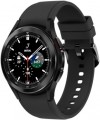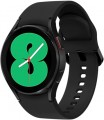Sports modes
The number of types of sports training supported by the smartwatch. The more of them, the wider the coverage of the potential audience is provided by a wearable gadget on the wrist.
The most common sports modes include running, walking, cycling, swimming, elliptical exercise, and so on. The quantity and quality of data for different sports depends on the technical level of equipment of a particular device. While some models only record heart rate and roughly calculate the number of calories burned, other smartwatches evaluate the effectiveness of a workout using a detailed list of data and even draw a conditional run track based on information from GPS satellites.
Navigation
This block contains both various navigation systems (
GPS, Galileo) and auxiliary features for them (
aGPS,
GPS tracking,
maps,
compass,
altimeter ,
barometer). More about them:
— GPS module. GPS satellite navigation module built right into the watch/tracker. The initial purpose of such a module is to determine the current geographic coordinates; but how this information will be used depends on the specific type and model of the gadget. For example, in some devices GPS is used only for measuring the distance traveled and/or speed of movement, while more advanced models support full navigation and are equipped with built-in maps. In addition, this feature is almost mandatory in children's beacons (see "Type") — it is GPS that is responsible for determining the location of the child.
— aGPS. An auxiliary feature that allows you to speed up the start of the main GPS receiver. To work for its main purpose, such a receiver must update data on the location of navigation satellites; Obtaining this data in the classical way, directly from the satellites themselves, can take quite a long time (up to several minutes). This is especially true for the so-called "cold start" — when the receiver starts up after a long break in opera
...tion, and the data stored in it has become completely outdated. aGPS (Assisted GPS) allows you to receive up-to-date service information from a mobile operator — from the nearest base station (this feature is supported by most operators nowadays). This can greatly speed up the startup process.
— GLONASS. This system is a Russian alternative to the American GPS. However it provides somewhat less accuracy, so GLONASS support is usually provided in addition to the GPS module. Simultaneous use of two systems, in turn, improves positioning accuracy.
— Galileo. European satellite navigation system, created as an alternative to the American GPS. Note that it is under the control of civilian departments, not the military. With a full fleet of 24 active satellites, the system gives an accuracy of up to 1 m in public mode and up to 20 cm with the GHA service. Working in conjunction with GPS, the Galileo system provides a more accurate position measurement, especially in densely populated areas.
— Maps. The feature of displaying topographic maps of the area with heights, relief and types of vegetation on the clock screen. Preinstalled maps are used for visual GPS navigation without being tied to a smartphone. Often, the ability to display maps is implemented in tactical smartwatches with a focus on tourism.
— GPS tracking. Many watches with the possibility of laying routes have the feature of guiding by the GPS track. At the same time, the wearable gadget acts as a navigator around the area, showing the route on the screen and suggesting where it is necessary to turn in one direction or another. Some smartwatches with a pronounced touristic bias also have a “Return Route” programme that allows you to go back along an already traveled route. In GPS tracker mode, trackpoints are usually recorded automatically based on the selected fixing interval. You can also mark a track point manually at any time.
— Compass. A classic compass is a device that indicates the direction to the cardinal points. Wearable gadgets usually use an electronic compass — a miniature magnetic sensor, the data from which, if necessary, are displayed on the display.
— Altimeter. A feature that allows you to determine the current altitude of the user's location. Note that the principle and format of the altimeter may be different. So, some models use barometer data for height measurements, others use information from a GPS sensor; the height itself can be determined relative to sea level, relative to some reference point, or in any of these ways, at the choice of the user. These details should be clarified separately.
— Barometer. A feature that allows you to determine the current atmospheric pressure. One of the applications of the barometer is weather forecasting: for example, a sharp drop in pressure usually signals the approach of bad weather. In addition, information from this sensor can be used to operate the altimeter (see above); and even if the gadget does not have an altimeter, the height difference between two points on the ground can be easily calculated from the pressure difference between them.Material
The material from which the body of the gadget is made. Some models are available in several versions, made of different materials — for example, aluminium or steel; for such cases, all available options are indicated in the specs at once.
—
Plastic. Plastic is often considered a low-cost option, but this is not true in the case of wearable gadgets: such devices can use different types of plastic, including very advanced, durable and reliable ones. So the overall quality of such a case, usually, directly depends on the price category of the device. The common advantages of all types of plastic are relatively low weight, resistance to moisture, the ability to give the body any colour and shape, as well as low thermal conductivity.
—
Metal. Cases made of metal, for which the manufacturer, for some reason, did not specify the specific composition. However, most often in such cases we are talking about
aluminium or
steel, see below for more details on both. But high-end materials such as
gold or
titanium are rarely hidden under the modest term "metal" — they are usually indicated directly in the specifications. Anyway, in general, metal cases are somewhat stronger and more reliable than plastic ones, they also look more solid, but they are also more expens
...ive.
— Steel. Usually, stainless steel is used for wearable gadgets. It is highly durable and reliable, does not corrode, looks stylish and neat, and is relatively inexpensive — cheaper than many aluminium alloys, not to mention titanium. One of the peculiarities of steel cases is rather heavy weight, but it can be both a disadvantage and an advantage: a massive case creates an additional feeling of reliability and solidity. It should be noted that most gadgets with steel cases have round dials and a traditional design, which is well suited even to a business style, but occasionally there are exceptions.
— Aluminium. Aluminium alloys combine high strength and low weight — much less than steel. But this material is somewhat more expensive. It is also considered well suited for bright youth gadgets, although it is occasionally used in more traditional devices.
— Rubber. A material found in some models of children's beacons and fitness trackers (see "Type"), but almost never used in other types of wearable gadgets. One of the key advantages of rubber is softness, which gives a certain degree of impact protection and makes the case as safe as possible; both are especially important for children's devices. In addition, such a case can be easily made waterproof and even completely sealed, as well as made in any colour. On the other hand, plastic has practically the same advantages (except for softness), and rubber costs a little more (although it is noticeably cheaper than metals).
— Titanium. Titanium alloys are premium materials and are rarely used, mainly in top-tier models of “extreme” gadgets. This material is light and at the same time extremely durable, besides it perfectly holds its shape when struck; however, titanium costs much more than the same aluminium, despite the fact that high reliability is not so often decisive.
— Gold. Gold or gold-plated case turns the gadget into a stylish fashion accessory. Such a case is very expensive, but this cannot be called a disadvantage: the price of the device emphasizes the status of the owner.
— Ceramics. Special high-strength ceramics is another premium material that not only performs a practical function, but also demonstrates the high level of the gadget and the solidity of its owner. On the practical side, in addition to strength and reliability, this material has extremely high scratch resistance, which allows it to retain its looks for a very long time even in not very favorable conditions. At the same time, ceramics do not tolerate strong point impacts.Bezel
Swivel ring around the round dial of the smartwatch.
Bezel exists for a decorative and protective purpose, and in many models it has additional markings and provides a number of special control options. By rotating it, you can navigate through the menu of the smartwatch, and it also simplifies interaction with the touch screen of the wearable device. On the bezel, special marks are often applied for the operation of the watch dial in the timer or stopwatch mode. The specific implementation of the features assigned to the ring depends on the specific model of smartwatch.
— Metallic. The metal bezel has high mechanical strength. Usually it is made of stainless steel.
— Plastic. A low cost version of the bezel, which is found in smartwatch models with plastic cases.

